Introduction 5
Progressive Thinkers as of 5/8/2020

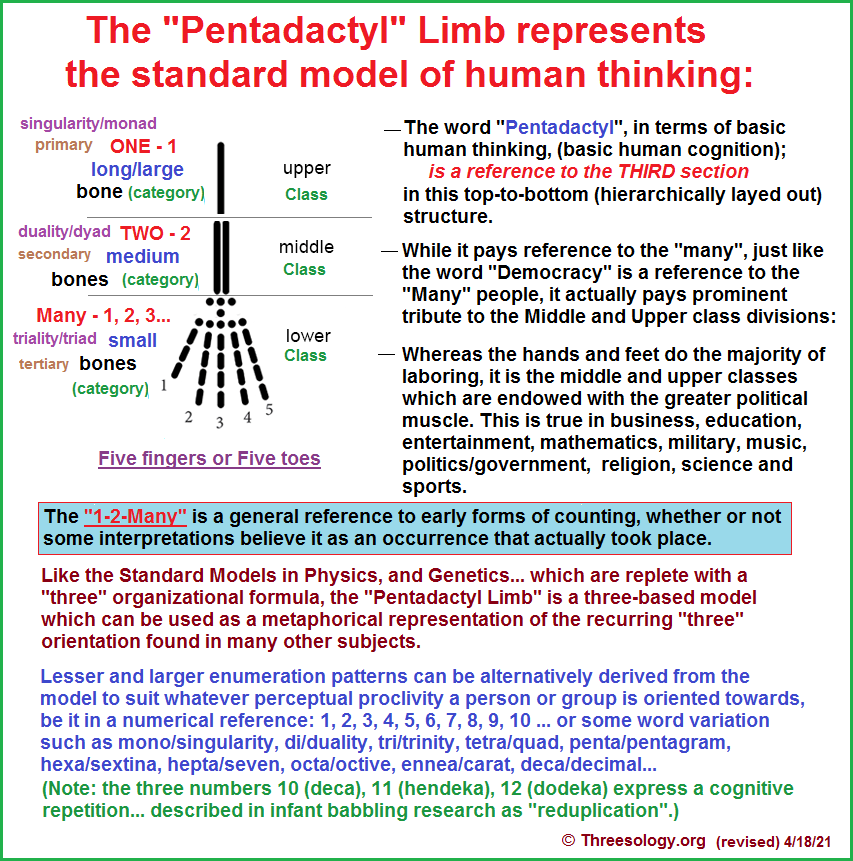
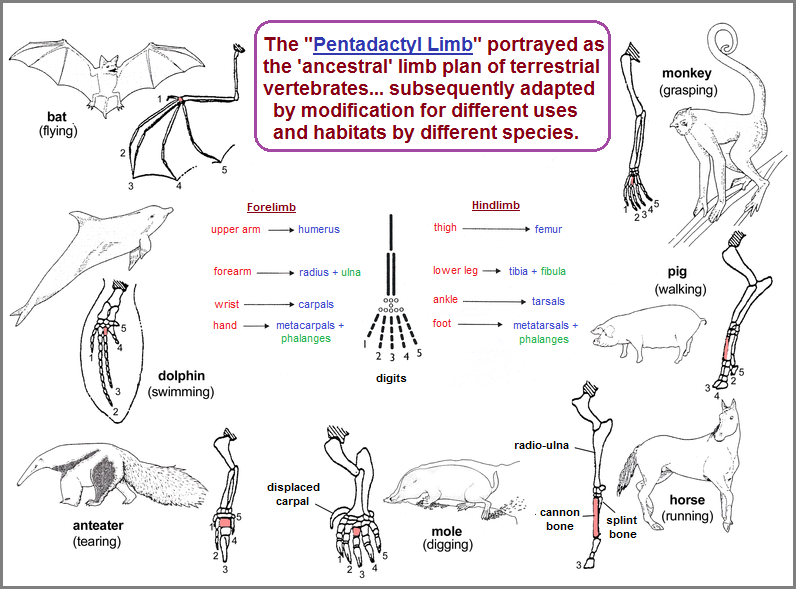
Introductions eventually come to portray themselves as a synopsis of the forthcoming material, yet in several instances a writer is faced with the realization that they are confronted with a need to be more expansive than what may first originated, that is if they permit themselves the ability to "color outside the lines" of the initial image which they began their adventurous description. Even if one attempts to follow a course of developmental biology as an assumed guide, the fact that biology is so diverse makes an effort to stay on some assumed course of portrayal can easily lead them into divergent paths; much like a child being introduced to a candy or toy store. No less, the task may be all the more difficult if such stores are actually departments among other departments which may be cause for distraction and absorption until one's thoughts find themselves back where they started or in some uncharted territory for exploration. Such is the case for adventuring to provide examples of a standard cognitive model, though eventually, one begins to discipline their efforts towards representing a model of sameness for the very many distractions to be encountered in different subject areas.
When one finds what appears to be an exception, and then finds other exceptions as well, there is a need for a model to incorporate such presumed exceptions into the framework as it is being developed, or scrap the model and begin to develop one that is more comprehensive, but still retain the initial proposal of an existing cognitive standard. Exceptions are not to be used as a refutation, but as a support for the development of a model in the making. For example, why Sigmund Freud's three-part model of Id- Ego- Superego may not be used by some interested in psychology, others find it a useful stepping stone upon which they nonetheless stand and determine whether or not it provides the vantage point they want to personally pursue. Just because a given pattern in the past is no longer used by some in the present doesn't mean it wasn't a cognitive standard at one time. The same goes for the ideas of 3 fates, 3 furies and 3 gorgons. Though they are no longer viewed as a predominant theme of thinking in present day terms, the fact that we did not have a comparable series of fates, furies and gorgons with some other or multiple quantities suggests something about the character of human thinking processes. It is of value to some readers to note that the three characterizations of the human psyche described by Freud are viewed in a hierarchically arranged developmental scenario which some observers align with the development of the human brain and/or mental state with respect to the species and not just the individual. In other words, the id, ego, and superego have a sequential order of development like the three germ layers. We humans use sequentiality as an alternative form of enumeration as means of illustrating a recurring pattern of human psychic formation. In other words, we don't customarily arrange things backwards, though there are instances of behavior that some might think are backward expressions such as the Chinese usage of the Surname first, the English (British) usage of driving on the left side of the road, and the Arabic way of writing from right to left, though other directions (such as up and down might also be mentioned as a distinct difference in how humans illustrate cognitive orientations.)
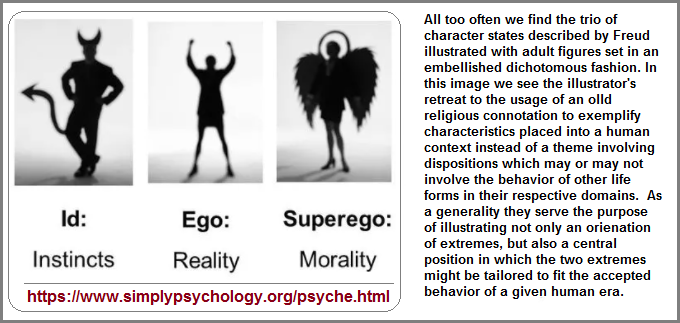
IdIn Freudian psychoanalytic theory, (the Id is) one of the three agencies of the human personality, along with the ego and superego. The oldest of these psychic realms in development, it contains the psychic content related to the primitive instincts of the body, notably sex and aggression, as well as all psychic material that is inherited and present at birth. The id (Latin for “it”) is oblivious of the external world and unaware of the passage of time. Devoid of organization, knowing neither logic nor reason, it has the ability to harbour acutely conflicting or mutually contradictory impulses side by side. It functions entirely according to the pleasure-pain principle, its impulses either seeking immediate fulfillment or settling for a compromise fulfillment. The id supplies the energy for the development and continued functioning of conscious mental life, though the working processes of the id itself are completely unconscious in the adult (less unconscious in the child). In waking life it belies its content in slips of the tongue, wit, art, and other at least partly non-rational modes of expression. The primary methods for unmasking its content, according to Freud, are the analysis of dreams and free association.
Many psychoanalysts now consider the conception of an id overly simple, though still useful in drawing attention to the unconscious motivations and irrational impulses within even the most normal human being.
EgoIn psychoanalytic theory, (the Ego is) that portion of the human personality which is experienced as the “self” or “I” and is in contact with the external world through perception. It is said to be the part that remembers, evaluates, plans, and in other ways is responsive to and acts in the surrounding physical and social world. According to psychoanalytic theory, the ego coexists with the id (said to be the agency of primitive drives) and superego (considered to be the ethical component of personality) as one of three agencies proposed by Sigmund Freud in description of the dynamics of the human mind.
Ego (Latin: "I"), according to Freud, comprises the executive functions of personality by serving as the integrator of the outer and inner worlds as well as of the id and the superego. The ego gives continuity and consistency to behaviour by providing a personal point of reference which relates the events of the past (retained in memory) with actions of the present and of the future (represented in anticipation and imagination). The ego is not coextensive with either the personality or the body, although body concepts form the core of early experiences of self. The ego, once developed, is capable of change throughout life, particularly under conditions of threat, illness, and significant changes in life circumstances.
SuperegoIn the psychoanalytic theory of Sigmund Freud, (the superego is the) latest developing of three agencies (with the id and ego;) of the human personality. The superego is the ethical component of the personality and provides the moral standards by which the ego operates. The superego's criticisms, prohibitions, and inhibitions form a person's conscience, and its positive aspirations and ideals represent one's idealized self-image, or "ego ideal."
The superego develops during the first five years of life in response to parental punishment and approval. This development occurs as a result of the child's internalization of his parents' moral standards, a process greatly aided by a tendency to identify with the parents. The developing superego absorbs the traditions of the family and the surrounding society and serves to control aggressive or other socially unacceptable impulses. Violation of the superego's standards results in feelings of guilt or anxiety and a need to atone for one's actions. The superego continues to develop into young adulthood as a person encounters other admired role models and copes with the rules and regulations of the larger society.
"Id." "Ego." "Superego." (Separate entries): (2013). Encyclopædia Britannica
It should be noted that in the psychology standard of Transactional Analysis, it can be defined as: Transactional analysis (TA) is a psychoanalytic theory and method of therapy wherein social interactions (or "transactions") are analyzed to determine the ego state of the communicator (whether parent-like, childlike, or adult-like) as a basis for understanding behavior.
The triad idea of child- parent- adult are sometimes loosely correlated with Freud's Id- Ego- Superego, though there is an emphasis on the Ego aspect of the human psyche. Humorously, if we view the id, ego, superego as representing sizes of the mental state of humans and then correlate the labels of child, parent, adult with these three sizes, it should be observed that the tow exterior labels of sizes have three counterparts (X- XX- XXX-small/ X- XX- XXX-large), but the middle size has no such attributes, while in the present psychology context it is the middle label which is used as a stable/central/control theme to define three different "sizes" of psyche-associated personality:
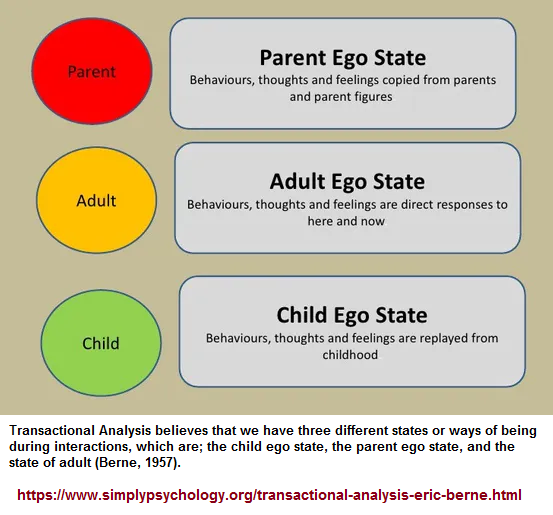
One might refer to the above two examples of three-patterned ideas from psychology as "mind plans" in an effort to show some correlation to the idea of "body plan" as is illustrated in the Pentadactyl limb, which, by the way, is a reference to the third aspect of the two trios, by counting from the largest bone to the smaller hand and foot bones. One might well reference them from the bottom up, but such a scenario is not a new mental pattern since we have both top-down and bottom-up architectural examinations and construction, at least philosophically speaking. Interestingly we do not have comparable references to ideas involving "diagonalization" or side-to-side approaches as linguistically illustrated options, though they no doubt take place in actual practices on an individual as well as collective thinking approaches.
... and yet, we find that psychology, like mathematics, depends heavily on a usage of patterns-of-two. Here is a list of "twos" referenced as Persistent Dichotomies
Mental plans can be viewed as body plans when put into practice, such as the three divisions of the U.S. government labeled as Executive, Legislative, Judicial. And since I already mentioned the proferans (sponges) on the previous page, let me provide their three body plans as an example:

A "body plan" may not at first seem to be what is being discussed when three items are aligned together and used as an example from which other ideas, activities or forms are derived. Take for example the three "foundation" stallions from which all Thoroughbred racing horses share a lineage:
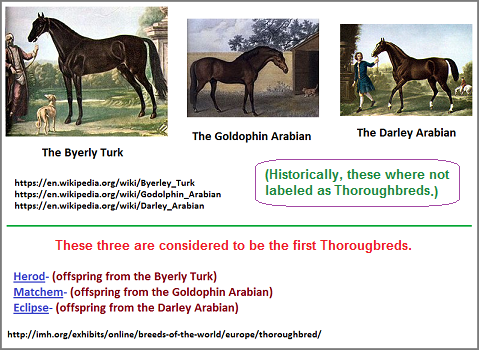
Other body plans may be viewed as basic functionalities or developed schemes of survival. Others are no doubt due to an imposition of human consciousness on the material presented and one's interpretation thereof as a consolidation, if not a three-pattern abbreviation, of which we find a similar occurrence in the several security departments/organizations of the U.S. government; such as the ATF (Alcohol, Tobacco, and Firearms), BIA (Bureau of Indian Affairs), BLM (Bureau of Land Management), CDC (Centers for disease control), CIA (Central Intelligence Agency), DEA (Drug Enforcement agency), DHS (Department of Homeland Security), DOD (Department of Defense), DOE (Department of Energy), FBI (Federal bureau of investigation), NSA (National Security Agency), etc., though there are others with 2 or more-than-three lettered designations. (Commonly Used Agency Acronyms)
While my primary interest has been a "threes" theme, I am not oblivious to the presence of other patterns. Indeed, one might think of all the patterns one encounters as the formation of a single overall pattern, even if one can not recognize such a form since to do so would require knowledge and memory of all things in existence. While human perception is quite limited, within the limitation are perceived patterns that one can arrange according to any predilection. Yet, in my efforts to collect patterns-of-three from different subjects, those occasions in which I do not find a pattern of three in an otherwise labeled basic formula of Nature, one must come to some reconciliation of where the pattern fits and whether or not it is being accurately presented by those who either establish the pattern in the first place or have simply followed suit in expressing an affirmative acceptance of a given pattern as the truth. Just because someone is a note expert of a given subject does not mean they can not have incorrect interpretations of a given perception. Hence, in finding an other-than- three pattern or even upon finding a pattern-of-three illustration, one must come to a point of questioning whether or not the pattern is correct. If all the examples of patterns-of-three I've collected are incorrect, then what is the correct pattern and can we ever be sure we are actually seeing the patterns as it truly is outside of human perception and interpretation? Be this as it may, we do the best we can and (admittedly) accept pattern-of-threes examples (for the most part), without question as to their validity.
The following image is a very small collection of "threes" ideas which can be presented as a collection of "basics":
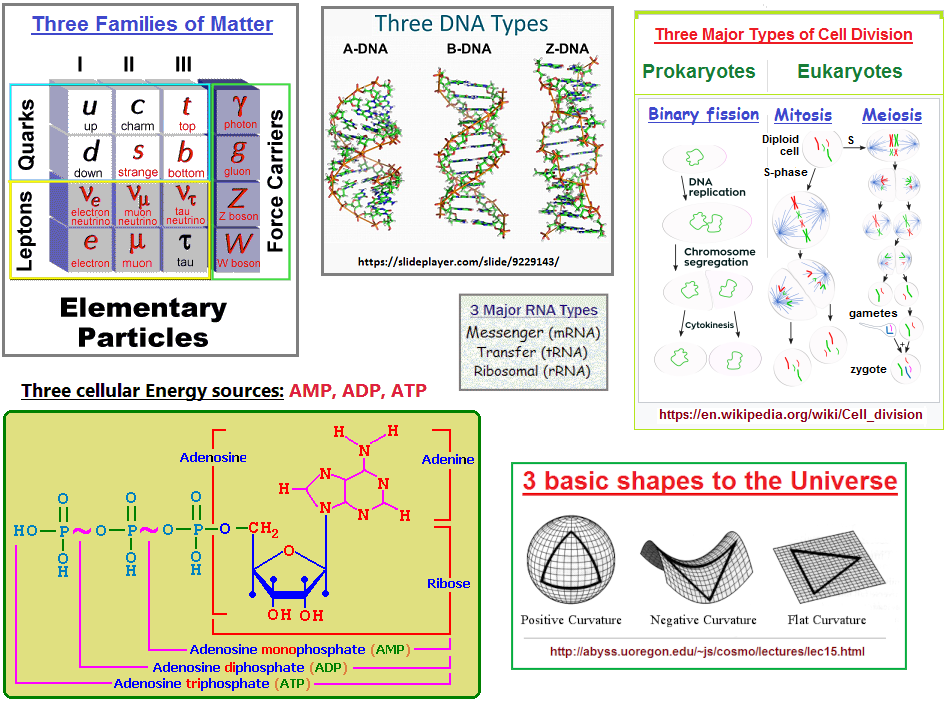
Anyone of the foregoing or all of them can be interpreted as representing a recurring theme present in multiple basic formulas. In some cases, such as the proposal of there being three different interpretations of what design the Universe takes, also illustrates the same enumerated theme as well as an underlying geometric portrayal of what I describe as a linear, circular and triangular configuration, even if the reader claims to see some other basic geometric form. Indeed, even if one disagrees with there being only three dimensions, that which goes beyond the three may be enumerated with the linguistic label of "many". Hence, instead of three one might claim there are four, or five, or ten or an unlimited number of dimensions, which... in effect, is like confronting a person in a group who insists upon saying they see something other than what anyone else sees so as to appear to be different. They may or may not actually see anything different but none the less want to stand center stage by being a voice from some fringe position as if to claim they are a path finder which everyone has overlooked. Whether they are a trailblazer or not is not the point. The point is that represent a position in a number line that is overlooked by the whole of all the perspectives being offered, which appears to be regulated by some fashion of the 1- 2- many theme. The options of choice are to say one sees less than (or none), the same, or more than everyone else. If their viewed is not enumerated, or is intentionally being illustrated to present itself as being a non-number perspective, then none-the-less stand at an extreme from the commonality and represent a "many" position or extremity, in their supposed singularity of mind.
Some may think to devise the interpretation that such a recurring use of the "three" value is due to the structure of the brain, of which there exists the notion of a Triune brain as characterized by Paul D. MaClean:
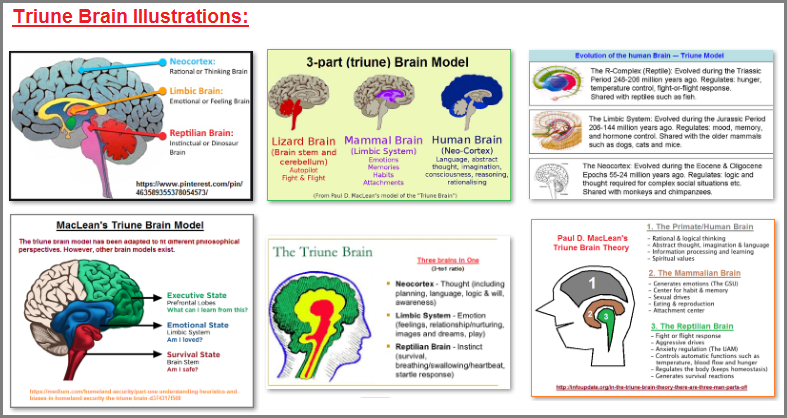
There are many other examples which can be provided as representations of a threes enumeration. Yet, how many and what kind of examples does one need to exhibit as an expression that the idea of a standard cognitive model appears to exist, even the reader does not approve of a "three-patterned" theme, or the usage of any number since they prefer a non-numerical referencing approach to reality whereby the lack of a means to collate the different perceptions will not reveal to them their personal limitations and the limitation of the human psyched?
One of the initially presumed exceptions to patterns-of-three is when I encountered a pattern-of-four. However, as I looked closer at such examples I came to realize that in very many cases what I was looking at was a three to 1 ratio, where three items were particularly similar and the fourth was particularly different. Take for examples the four gospels of the New Testament. Three of them (Matthew, Mark, Luke) are referred to as being "synoptic" which refers to the words synonymous and similar, while the John version is viewed as being Idiosyncratic, or let us say "different".
(The Synoptic Gospels are) the Gospels of Matthew, Mark, and Luke in the New Testament. Since the 1780s the first three books of the New Testament have been called the Synoptic Gospels because they are so similar in structure, content, and wording that they can easily be set side by side to provide a synoptic comparison of their content. (The Gospel of John has a different arrangement and offers a somewhat different perspective on Christ.) The striking similarities between the first three Gospels prompt questions regarding the actual literary relationship that exists between them. This question, called the S synoptic problem, has been elaborately studied in modern times. ("Synoptic Gospels" (2013). Encyclopædia Britannica.)
Another example comes from a study of sponges (called poriferan). They were traditionally assigned to three classes: Calcarea, Hexactinellida, and Demospongiae. With the discovery of the Homoscleromorpha, there was a fourth group but it is distinguished by the lack of a skeleton or have siliceous spicules without an axial filament. (page 250, Integrated principles of Zoology, ISBN: 978-0-07-304050-9).
In neither of the two examples do the authors refer to the groupings as a three-to-one ratio. However, whereas this may be viewed as a particular type of three plus one, we should also be mindful of groupings labeled as three and one, three in one, one from three, buy three get one free (such as when purchasing vehicle tires), etc., as well as geometric formulas such as a square which may have a cornerstone which delineates one from three, as well as a triangle and a circle ensemble, etc...
For multiple other 3-to-1 references: Three-to-one ratios page A
In other examples we may encounter a five example that, upon closer examination, reveals a two/three differentiation. Sometimes differences might be difficult to recognize in one or another type of grouping because of the language being employed by a given reporter or illustrator in a given context. Much like someone who claims they saw a ghost, Big Foot, Alien or other entity, but may not have actually seen what they think they saw and a person listening to them or reading about them needs to give them the benefit of a doubt, but attempt to verify the perception as it was described. Without repeated proof, a situation can be assumed to be either false or true, depending on one's inclination. In other words, I have come across material being labeled one way, yet upon seeing the item myself, I would not label it as it is being described. A good example of this is when one looks at the layer of a cell. Some people refer to this as a bi-lipid layer while others have described it as a trilaminar construction. The usage of the word "lipid" focuses more so on the lipid context while minimizing the layer between. Hence, we have a 2- versus 3-patterned difference in interpretation, though the object is the same.
A person might say that there are other patterns, some which they may or may not quantify, whereby in a quantitative thematic approach towards categorization, we cite the usage of the word "many" as a preliminary stand-in-reference to the disposition of thinking in terms of "other" patterns. Unless the patterns are enumerated, they are thus relegated to an "other" realm of distinction which can be lumped in a "many" frame of reference which has several identifications such much, bunch of, lots of, numerous"...etc. labels. However, let us leave open the value in order that those who come in the future are not obligated to accept this definition. Far too often the "established" definitions and criteria for a given perception or set of perceptions takes on a "closed shop" system of organization which disallows alternative approaches, much in the manner of gerrymandering districts to try to stack the deck in voting systems. In so very many instances we see borders being established just as dogmatically in science (a supposed search for truth) as those found in art, games, sports, religion, business, law, music, etc., despite all the claims for allowing unbridled creativity and originality of thought.
While collecting patterns-of-three in association with natural phenomena may not appear to be an academic-taught discipline, it's because it hasn't been established as valid a pursuit as have some rather questionable pursuits in philosophy, art, music, "political science", economics, sociology, and mathematics. Whereas many of the rather questionable venues are attached to government, industry, religions, and educational institutions which provide an income for those being identified as an expert, all of whom may well resort to a reliance on enumeration in some fashion, it is not fashionable (as yet) to use enumeration in defining developmental, cognitive, and natural phenomena in a cross-discipline fashion, without being labeled as someone engaging in numerology, though this is what takes place in gambling, statistics, and economics. If you know the minutia of a given subject you may be considered an expert, but if you know the "magnutia" of multiple subjects you may be considered a non-professional dabbler.
Although we can enumerate the quantity of bones in the hands and feet which reveals there are altogether 106 bones out of a 206 total bones for the entire human skeleton, the "many" bones reference is useful as a macroscopic generality to be compared with the cognitive fashion of a number sense in the development of enumeration used by humans. In other words, the number system did not count in a 1, 2, 106 sequence. The idea of "many" referencing a quantity beyond and encapsulating a given number was the role the human mind engaged in. Whether the initial attempts involved a 1- many, 1- 2- many or 1- 2- 3- many scheme does not alter the basic formula which may have begun with "many" and then a 1- many sequence. However, Nature... in a biological sense, appears not to have used this sequencing event, unless we say that a single cell with a composition of many/multiple organelles was the representation of a single (one) cell with many organelles. If this is the case, then the idea of "many" may well have preceded the idea of a singularity. Likewise, if we think in terms of the development of the Universe, was it a "1" (singularity) or a multiplicity from which a specific singularity arose... and that specific singularity just happens to be the presumed existence we humans are physiologically enabled to perceive?
Of all the number patterns humanity has available to it, there is an astonishing array of examples which exhibit low number values. Whereas we may say there are billions or even trillions of stars, we don't routinely use this value of enumeration when speaking of multiple other subject materials. Such a reference is best placed in a provisional "many" theme of referenced material. Typically, life spans are referenced with single, double and sometimes triple digits. But body plans of different life forms are routinely expressed with have a small number of representations such as the triple-patterned Head-Thorax-Abdomen of insects. We don't routinely find anyone using large number variables to delineate occurrences in Nature. Whereas we do encounter large number occurrences such as the chromosome count for ciliated protozoa which is 16,000 (List of Chromosome counts), this value is not a recurring value found in other subjects, much less biology. Because humans have only 46 and the early primates (gorillas, chimps, orangutans) have 48, using such a retrograde numerical increase as a means to develop a different type of lineage disposition might well be able to help us in identifying chromosomally-related "missing links"... or at least unidentified ones.
However, the idea of "gigantism" should come to mind when we see rather anomalous-looking large sizes in numbers. Indeed, the fact that the human body develops what is said to be billions of cells (with the word "billions" being used in place of the word "many") because we don't have an accurate count and accept a closest-approximated guesstimation, one might want to think that the number of cells in a human body mimics the quantity of stars in that which we call the Universe, and might want to slightly revise this to express the anthropomorphic notion of a Universe-body, with the stars being synonymous with differentiated cells.
Date of (series) Origination: Saturday, 14th March, 2020... 6:11 AM
Date of Origination (this page): Sunday, 13th March, 2022... 5:56 AM
Date of Initial Posting (this page):
Wednesday, 16th March... 2:31 PM